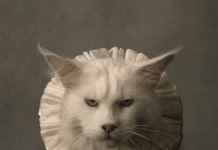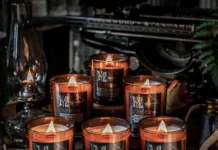Feature Image:
Stargazer by Annie Stegg
gallerygerard.com
There once was a witch who lived a quiet life near the edge of a forest. She was not quite in the realm of mortals, who were oblivious to her pretty cottage and the smoke rising from its chimney as they passed on their way to the village. Nor was she in the magical realm of the otherworld, where animals spoke and the fae dwelled among the trees whose leaves danced for the songs the west wind offered. She was somewhere in between, longing for the kinship of others.
Most mornings the witch could be found in her garden attending to the plants that kept her nourished and that filled her apothecary with the ingredients for medicine and spell work. In the afternoons, she made up songs as she ground her herbs to form magical charms—rose and lemon verbena for love, fennel and cowslip for healing. And as shadows fell over her quiet cottage, she sometimes cried herself to sleep.
But over time, she found that during those between times when the clock stood still for the briefest moment and magic tingled at her fingertips, she could indeed touch the worlds around her. At dawn, as silky strands of light broke through the darkness, she placed notes within small charm bags and tossed them through the misty veil into the mortal world. She could just make out the silhouettes of the villagers who would find her bags. Sometimes they opened them and found her affirmations of love, kindness, or gratitude written on flower petals. Some villagers responded by looking around, confused, because they saw nothing but the entrance to the forest. Others quickly tucked the charm bags into their pockets and continued on their way—and still other villagers only kicked the small bags off the path.
When the clock struck midnight, when one was neither in one day or the other, the songs of the fae floated softly through the thinning veil straight into her room. She would run to her window and join in with their melodies about the delights of love. She knew they heard her because they always stopped to listen as she sung a line or two on her own, before scattering into the folds of their magical landscape.
On one especially lovely twilight, when purple and orange hues seeped through the trees and fireflies lit up the corners of the garden, the witch felt a twinge of an especially potent magic fill the air.
“Hello,” a low voice called from behind the frond of a fern near the edge her pond. “Hello back.” The witch was giddy. It had been so long since someone had talked to her. She gently lifted the fern frond and squatting in the mud was a large, brown toad. “Wherever did you come from?” she asked.
“I come from beyond the misty veil of the forest. The faeries sent me to see what kind of witch you are.”
The witch laughed. “Not a very good one, I suppose. I seem caught up in this liminal space and can’t seem to find my way out.”
The toad croaked, and through the veil appeared many animals who call the twilight their home. Bats and owls, frogs and moths, surrounded the witch.
“Shall you fetch the tea?” a large spotted owl asked.
The witch smiled wide. She knew this was the beginning of a wonderful friendship.
As time passed, the witch always looked forward to twilight, when her garden came alive and bats began to flit and swoop, tree frogs chirped, and the large spotted owl haunting the shadows called out, “Hello, friend, it’s our twilight hour.” But it was the toad that she held in the highest regard. He was the one who sat with her whispering the secrets of transformation. And listen she would. Before long she had learned how to cross the veil. And in no time, as dawn’s lighted fingers reached above the eastern mountains, she would walk among the villagers of the mortal world, making friends and handing out her charms. And as the clock struck midnight, she would slip into the forest and dance and sing with the faerie folk under a dark, velvety sky.
So dear witch, as you walk your garden during the twilight hours, when it is neither day nor night, be on the lookout for those magical creatures who call this time their own—the lumbering toads and moths who flit near porch lights, the bats who dart and swoop under an azure sky, and the owl who watches from the shadows. And if you’re lucky, fireflies will light up your garden space with a magic all their own. Be quiet in their presence and listen to the wisdom they share. Because as any witch knows, the most potent magic can be found when we are neither here nor there.
ATTRACTING ANIMAL ALLIES TO YOUR GARDEN
BATS
This misunderstood creature of darkness has been given a bad rap and is more loathed than loved by many homeowners. But bats play an important role in the garden as they consume insects, including many pest species. As magical creatures, bats in your life symbolize change and transformation. They signify the promise of rebirth and power gained through transition.
To attract bats to your garden:
* Use Flower Power: Plant plenty of fragrant and evening blooming plants that entice nocturnal insects, which in turn attract the bats.
* Shelter: Buy a small bat house (online or at any garden center). Mount their new home on the side of your house at least fifteen feet high. Never mount a bat house on fence posts or trees as these can be easily accessed by predators.
* Water: Bats can lose up to 50 percent of their body weight in water per day, so having a water source nearby is very important to enticing bats to your garden. A bird bath or fountain will do.
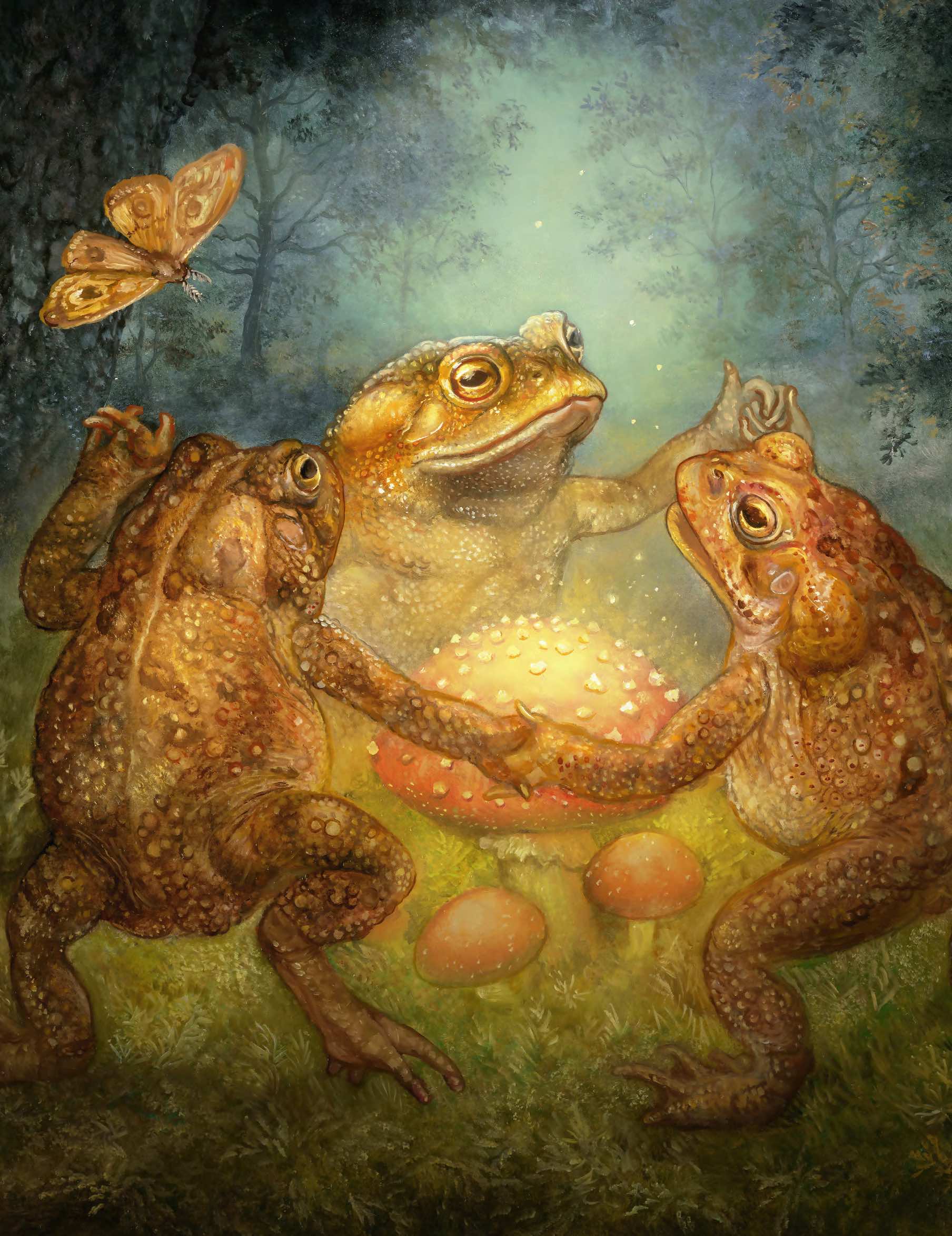
TOADS AND FROGS
Seeing a toad in the dusky light of twilight reminds us that transition must happen in order for us to grow. A toad begins its life in the water, where their eggs are gelatinous clumps, but once hatched, an amazing metamorphosis begins that is all at once complex and beautiful.
As magical creatures, toads and frogs are symbols of metamorphosis and reminders of our own creative power.
Toads in the garden are beneficial: They eat thousands of pesky insects and provide you with the pleasure of hearing their soothing, throaty song as evening approaches. To encourage toads (and frogs) into your garden, supply them with:
* Water: Toads and frogs are amphibians, so they need water in which to lay their eggs and transition from tadpoles to toads.
* Shelter: To protect them from the elements and predators, provide leaf litter under shrubs and a small hollow piece of log or an upturned terra-cotta pot with an opening large enough for them to enter.
* Avoid Chemicals: Using chemical pesticides or fertilizers in your garden will kill beneficial frogs and toads. Use organic mulch and let the toads and frogs take care of the pests.
LUNA MOTHS
I have never encountered a luna moth—they are not indigenous to my region—but if you live in southern Canada or the eastern half of the U.S., you’re in luck, because the hardwood forests in these regions are the places these magical creatures of twilight call home. Luna moths cocoon for two to three weeks before emerging as adults. They have no mouth or digestive system, so they do not eat; instead they spend their seven-day lifespan seeking a mate and laying their eggs.
As magical creatures, moths are masters of the mysterious realm of shadow. They teach us to have courage in change and to always seek the light. In their larval stage, they eat from the leaves of many fruit or nut trees. To attract them to your garden, consider planting such trees as chestnut, black cherry, sweet gum, and hickory. And not to worry: The caterpillars pose no harm to the trees.
OWLS
One of my favorite sounds to hear as I stroll through my garden at twilight is the hoot of an owl from the forest that borders my property. Owls are not a common backyard bird and require more than a handful of seeds to entice them. These mysterious raptors are not active during daylight hours but hunt at night. They are excellent for rodent control, but that being said, they will also eat other birds or small mammals. Smaller owl breeds are excellent for insect control. As magical creatures, owls are harbingers of magical wisdom, omens, and visions.
To attract owls to your garden:
* Nesting Boxes: Owls prefer to nest in hollow trees, but nesting boxes, which can be purchased or made, and hung in trees at least 10 to 20 feet high, are a great substitute.
* Provide Perches: Make a naturalistic section of your yard or garden, including a few unpruned trees to provide perches.
* Water: Owls obtain water mostly from their prey, but if you live in a hot climate, provide a water source in a secluded part of your garden.
* Switch Off the Lights: Owls hunt more effectively in darkness. Keep exterior light limited.
* Kitty Curfew: Most important, if you have cats or small dogs, make sure to bring them in during the evening when owls are hunting.
FIREFLIES (LIGHTNING BUGS)
As magical as it is where I live, fireflies are not a part of my landscape. The species of beetle in the Lampyridae family that lights up is not typically seen west of Kansas. A few years ago, when my parents took a long road trip across the U.S. to the east and then down south along the coast, my mother sent me beautiful pictures of an evening landscape that seemed lit up by thousands of tiny faeries. Her message was “I thought of you.” I was smitten.
These magical creatures show us illumination when we are feeling lost and are a powerful vehicle in faerie magic and are associated with fire magic.
To attract fireflies to the garden:
* Water: Fireflies like to gather in moist areas such as marshes, near ponds or pools, or near standing water. By adding a fountain or other water feature, you can better entice them to your yard or garden.
* Naturalization: Encourage fireflies to your garden by choosing native trees and shrubs to add to your landscape, leaving leaf litter or conifer needles under trees to provide nest material. Add a downed log or stack of firewood for nesting and to attract soft-bodied invertebrates to provide a food source for fireflies’ larvae.




























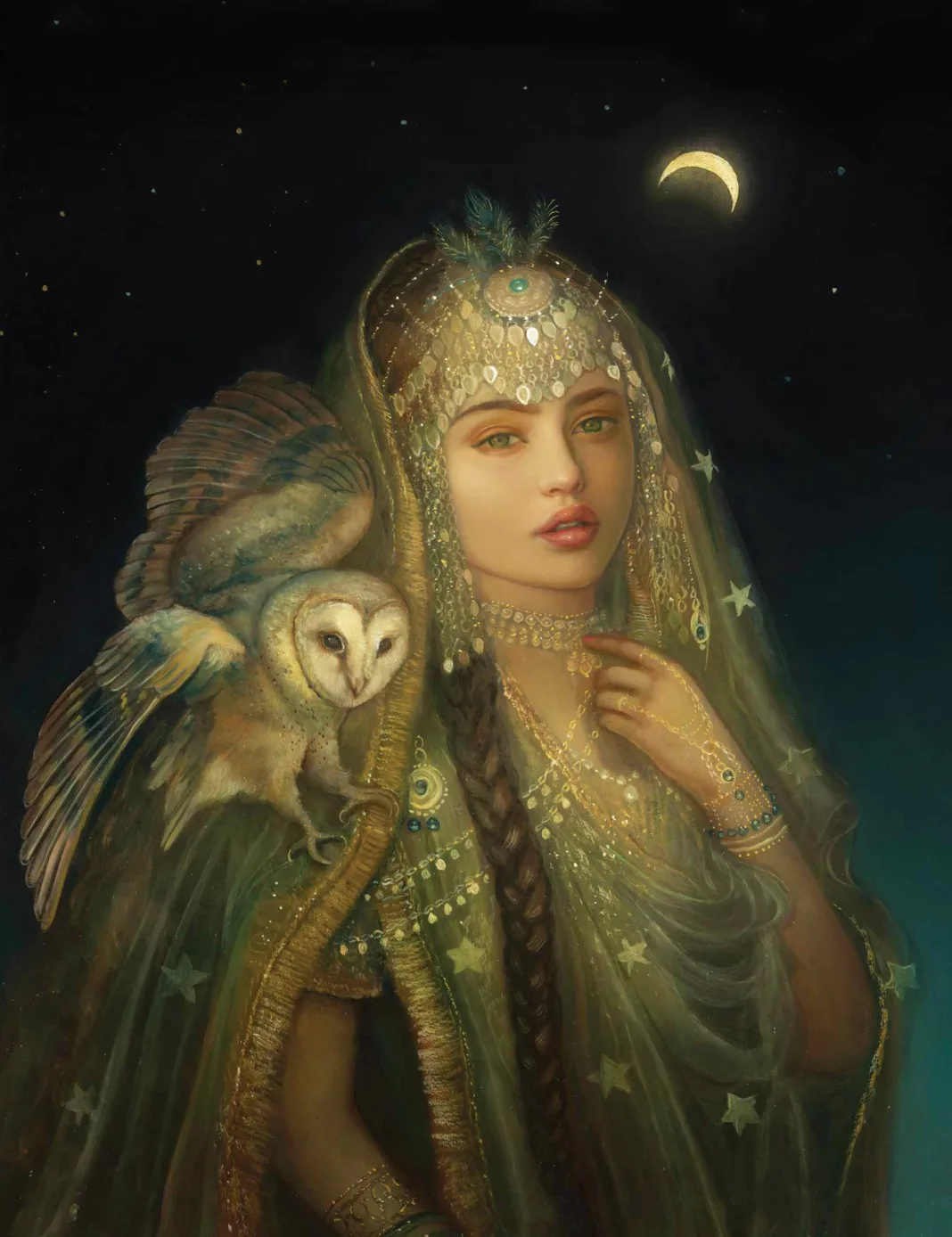
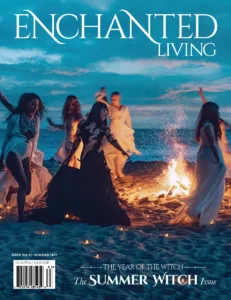 Enchanted Living is a quarterly print magazine that celebrates all things enchanted.
Enchanted Living is a quarterly print magazine that celebrates all things enchanted. 